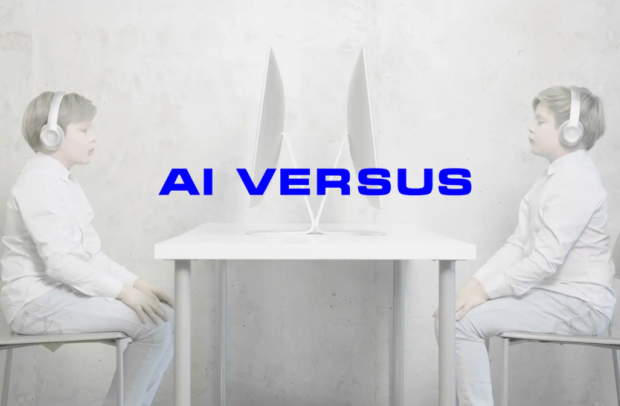
The Russian Project Using AI to Sift Between Real News and Propaganda

Immersed in a swirling, shifting and constantly evolving information age, it can be hard to sift through the news and information that comes at us from all angles to determine what’s true, what’s fake and what is straight up propaganda.
It’s an issue that’s close to the heart of independent Russian media company TV Rain, a broadcaster with a history of going against the grain of the Russian establishment. They and their – also independent – creative agency Voskhod wanted to demonstrate the pernicious effect that propaganda-led news can have and to demonstrate in stark terms the difference between propaganda and independent news.
To that end, they trained two artificial intelligences for six months. One was exposed purely to state-owned TV Russia-1 and the other TV Rain. Now, the curious can head online to ask the bots questions – and the differences between the two are shocking.
Andrey Gubaydullin, Voskhod’s creative director, explains: “Both intellects can analyse information on their own and create connections between meanings. They have no past experience. There are no outside factors that could influence information perceiving. They seem to be consuming information as it comes, from square one. Imagine that we took two twins who know nothing about the world and tried to form their worldview. In one case, it would be with the help of TV-Rain, in the other of ‘Russia-1’ TV-channel. Now they are answering the questions using the information they absorbed while ‘watching TV’ during the experiment. And when kids don’t know something, they start to make things up. That’s the most fascinating part of it”.
Voskhod collaborated with developers, ISD, to create the experiment. They are adamant that as researchers they were not trying to ‘prove’ or skew anything, rather they wanted to see what impact different information sources would have on ‘tabula rasa’ or blank-slate AIs with no cultural, political, or emotional baggage.
“We’re not trying to prove anything to anybody,” says Victor Shkurba, CTO at ISD. “We are researchers. We are conducting an experiment. What results will we achieve? How mature will the young minds get? How different will they be? What will their worldviews be like? Honestly saying, we don’t know this ourselves. And that's the most fascinating part of it.”
So how did they do it? Andrey Sergeev is head of development at ISD. “We created two identical neural networks. The same algorithms and operation principles are at the basis of both. Both neural networks can analyse information and connect meanings. They may be teaching themselves and then answer users’ questions. The topics for the dialogues are limited, though.”
The team transcribed and uploaded daily news shows from each broadcaster and trained the systems to be able to connect and analyse meaning in human speech. “If you take the vector image ‘Moscow’ and add the vector image ‘Russia’, you get the concept ‘capital’. Following the same principle, ‘Moscow’ minus ‘Russia’ plus ‘Great Britain’ equals a vector image close to ‘London’. Examples like this help the system to start analysing the interconnections in our speech,” explains Victor. “It starts to understand human speech, if I may put it like this. The bigger the dataset is, the more information the neural network gets, and the more extensive its multidimensional space of interconnections is. This is how it learns. This is how we do this, too. We create connections between objects and notions around us.
The end results are stark. For example, questions like ‘What is gender equality’ triggers markedly different responses. The Russia-1 bot says, “American-style democratic values”… while TV Rain says , “one of the main things”. On the touchy questions ‘Why does Russia need the Crimea’, Russia-1 answers “to put Ukraine in its place”. TV Rain, however, sees things differently and responds, “for splitting the elite and street protests.” (Check out screenshots of examples below.)

















